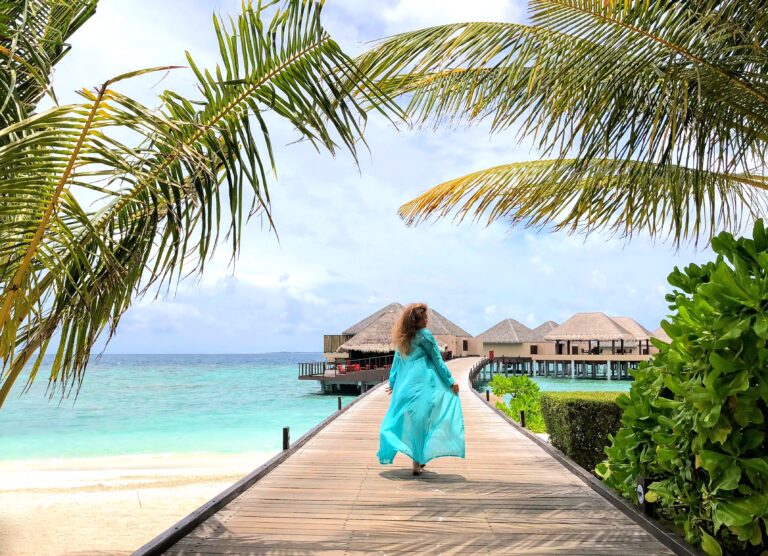
The Maldives are the stuff of dreams, whether it’s fantasy holidays inspired by those impossibly flawless photographs you’ve seen or those annoying fancies about quitting your day job and spending the rest of your life on an exotic island. You know, the places that will never be able to live up to your expectations of beauty and wonder. We discovered that the Maldives does, in fact, live up to all of our expectations. It appears precisely like the stock photos on your screen: bright sun, clear blue lagoons, house reefs filled with fish, low waters teeming with baby reef sharks and rays, and white sand beaches stretching out into miles and miles of turquoise oceans and bluish-green seas.
-
There are almost 1,000 tiny islands in the Maldives.
That’s right, you read that accurately. The Maldives, which are located to the south and west of India and Sri Lanka, is made up of about 1,190 distinct islands scattered throughout the Indian Ocean. But we’re not talking about an archipelago the size of Hawaii here; some of the Maldives’ islands are so small that you’ll have to zoom in all the way on your Google map to detect them. Others are nothing more than a sliver of sand protruding from the water. That means that, except Male, the most populous island, many islands have only one resort or hotel.
-
Those islands aren’t all populated.
There are 26 different atolls in the Maldives, out of hundreds of islands (or collections of islands). However, only roughly 200 of these are genuinely inhabited. Male Island, for example, has a year-round permanent population, as well as farming towns and fishing settlements. There are other islands that are off-limits to tourists, despite the fact that they are populated by inhabitants. Apart from that, the Maldives’ uninhabited islands are used for farming or industry, or as “picnic” islands for resorts that holidaymakers can visit for a day for private, romantic meals.
-
The Maldives have some man-made islands.
While most of the islands in the Maldives are thought to have been generated by volcanoes (and that most of the islands themselves are the very tops of those volcanic islands that have been further built up by coral), some are constructed. Huhulmale, for example, is a “reclaimed” or “artificial” island that was built in 2004 by dumping tonnes of sand and concrete to build a foundation. It now resembles a full-fledged town, complete with paved roads, stores, residences, and a beach.
-
The Maldives may face major problems as a result of climate change.
If you need any additional motivation to take that long-awaited Maldives Holidays trip, consider this: it may soon be gone. Several dozen islands have already vanished as a result of natural sea erosion, natural calamities such as the 2004 Indian Ocean tsunami, and increasing sea levels. Furthermore, coral is the geological foundation for most of the Maldives’ islands, and it is particularly vulnerable to rising ocean and sea temperatures.